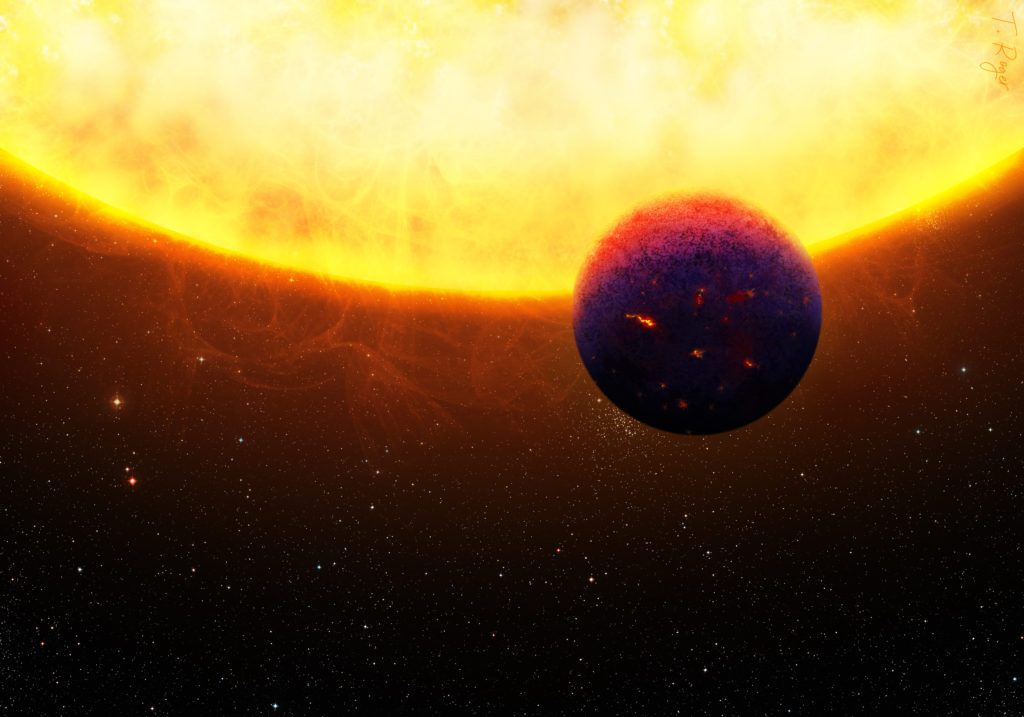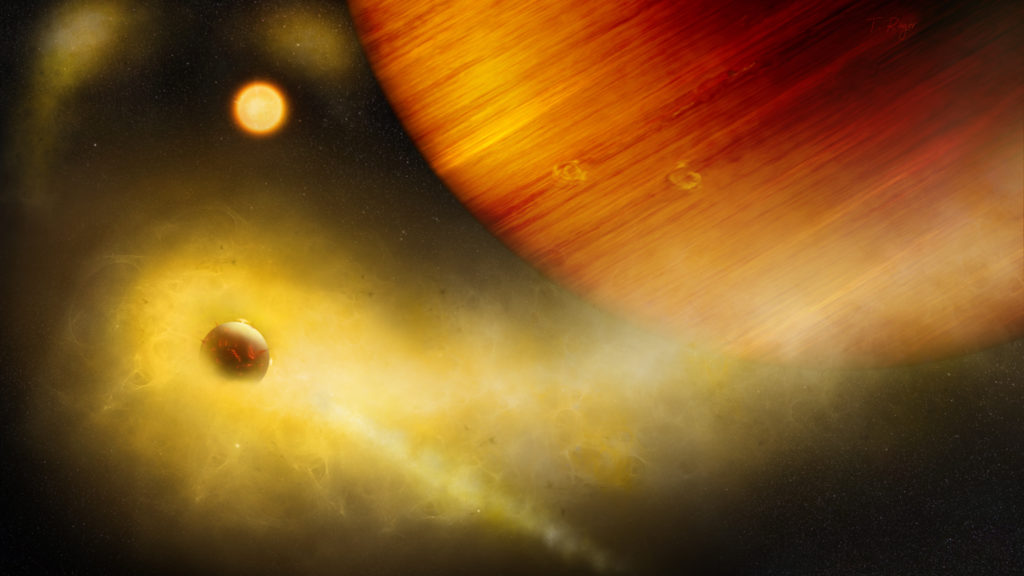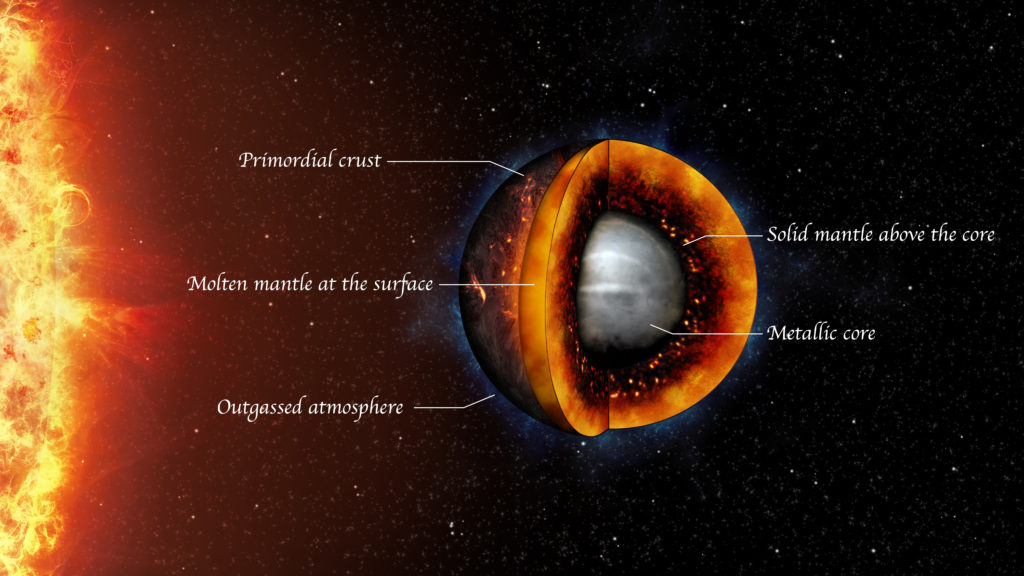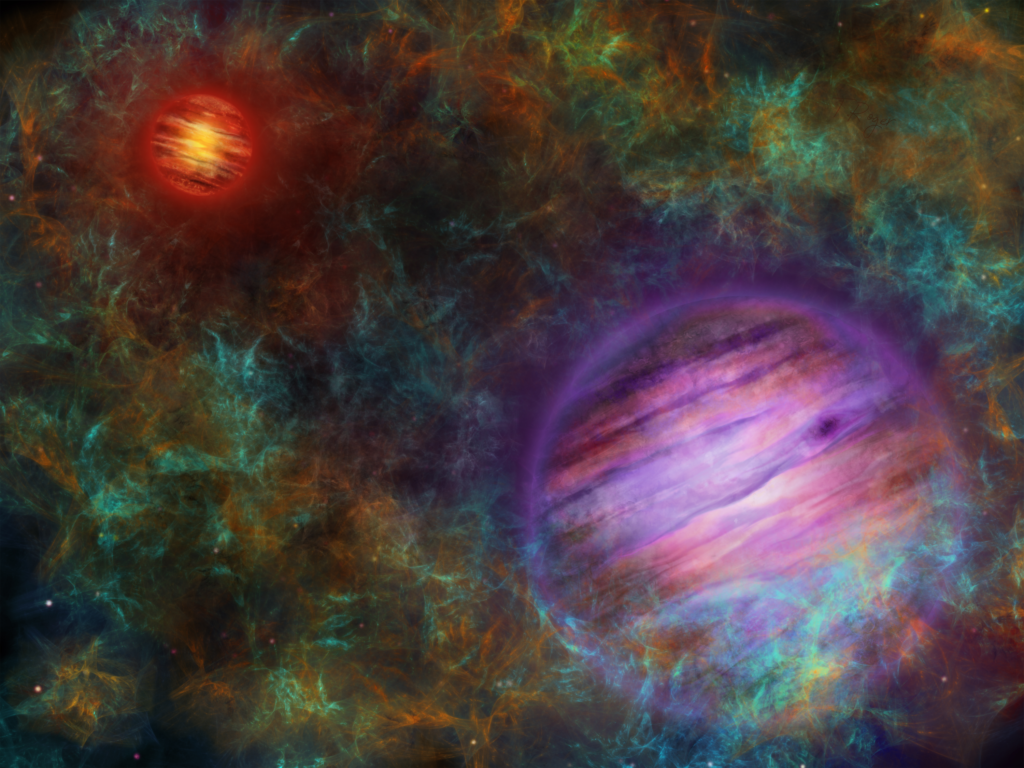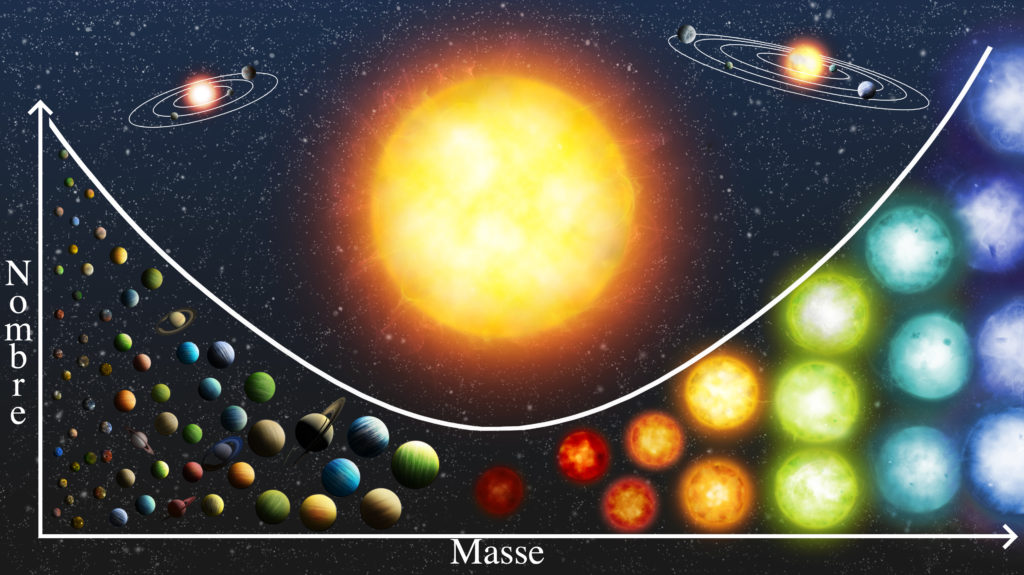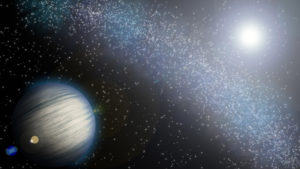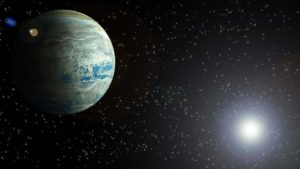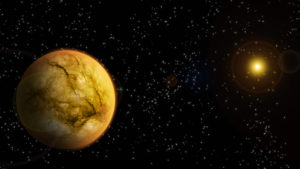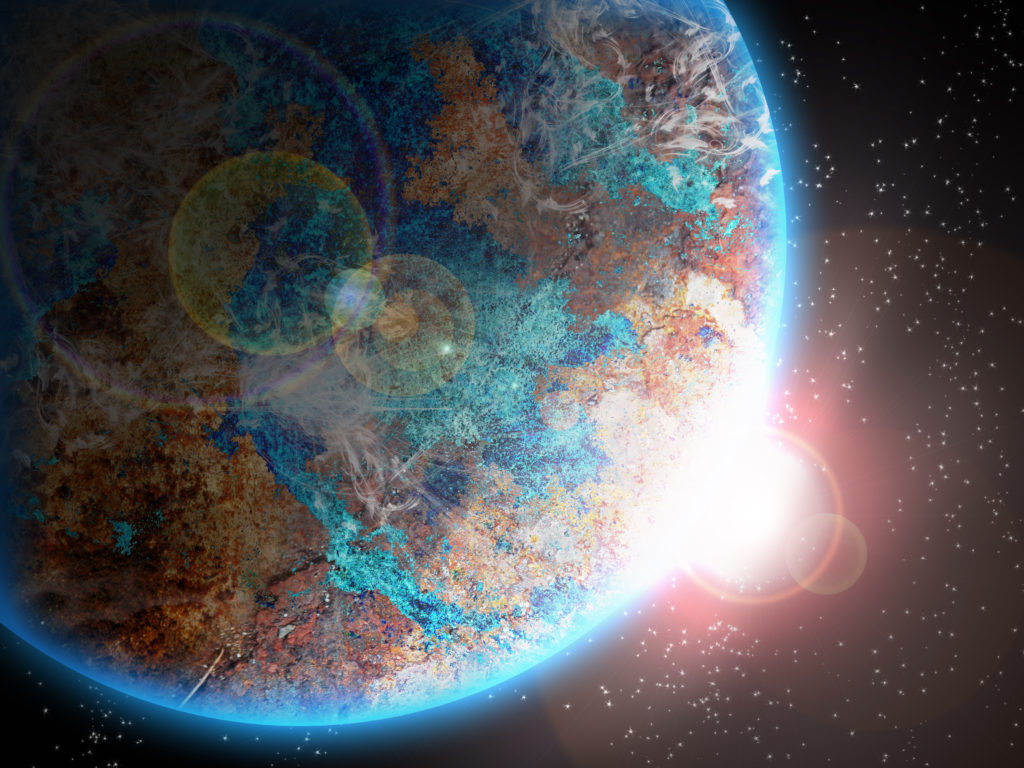I have always loved art and computer graphics, in particular, I have been developing skills in digital painting as an autodidact since childhood. As such, it was natural to combine it with another passion: astronomy, in order to produce illustration and rendering of astronomical objects. Artist’s impressions are serving multiple purposes: they ease the understanding, they can help identify specific objects, they carry informations and finally they sparkle the imagination and thus the interest of the public… I have written a small essay on the importance of artist’s impressions, that you can consult here. It explains further those purposes and also proposes a little tutorial on how to make an exoplanet illustration in just a few minutes. I have used my digital illustrations skills in two applications so far. I do many different computer graphics out of the context of science, for more details on my computer graphics work, please visit the dedicated website: The Elegance of Science.
For specific science papers
I have been collaborating with colleagues to create artistic illustration for them, to join to press release about their article publication. For now, seven illustrations were made in this specific context but more are coming. You can read more about the associated research results in those articles from the PlanetS website: Sapphires and rubies in the sky, Better to dry a rocky planet before use, Hints of volcanically active exomoon, Liquifying a rocky exoplanet, A pair of lonely planet-like objects born like stars and Volcanoes might light up the night sky of this planet.
Left: Artist’s impression of 55 Cancri e for Caroline Dorn et al. 2018, about planets made of rubis and sapphires.
Right: Artistic illustration of the dichotomy between planets born in a massive stars-rich environment and not. Massive stars enrich neighbourhood with Al-26, which tends to dry the planetesimals and lead to « dry » planets, while if not, can become ocean world with kilometres deep oceans.
Left: Artist’s composition of a volcanic exo-Io undergoing extreme mass loss. The hidden exomoon is enshrouded in an irradiated gas cloud. Patches of sodium clouds are seen to trail the lunar orbit.
Right: Artistic illustration of the interior of a molten, rocky exoplanet. Here with labels.
Left: Artist’s view of a the duo Ophiuchus 98 A and B. They are two brown dwarf of very -low mass, so young that they are still surrounded by their molecular cloud. They have slightly different mass and temperatures hence the various colours.
Right: Artistic illustration of the interior of a super-Earth exoplanet LHS 3844 b, which might exhibit a very peculiar tectonic flow with the warmer material erupting on the eternal night side (the planet is tidally locked) and the colder material sinking on the day side despite the very close proximity of the host star. Given it is for the same author: Dan Bower, we kept the style of the previous planet interior illustration as much as possible in order to get an uniform series in the future with more illustrations in it.
Artist’s illustration for Manuela Raimbault My Thesis in 180 seconds. Represents the occurrence rate of various stellar companions, by mass. The more massive is a planet (left part), the less you will find orbiting a star. On the contrary for stars (right part) orbiting another star, they are more likely to be present if they are more massive. In the middle we can see an empty area which is the so-called “Brown-dwarfs desert”. Top: a central star, and two examples of systems.
With the public
I also carried out an animation on this subject during the 2018 edition of the event Nuits de la science in Geneva. During the event which theme that year was « The art of science », amongst many other art related activities (including g-Astronomy, music, etc.), we proposed to the public to create their own exoplanet artist impression together in ~10 to 15 minutes, using the software Adobe Photoshop. This was used as a medium to introduce people to exoplanet related concepts, such as atmosphere, detection, etc. and discuss with them the use we have of an artistic rendering, the rules and compromises we have/do when preparing one. Here are some of the results with the public (some others had rather… interesting… artistic choices that I will not share here).
